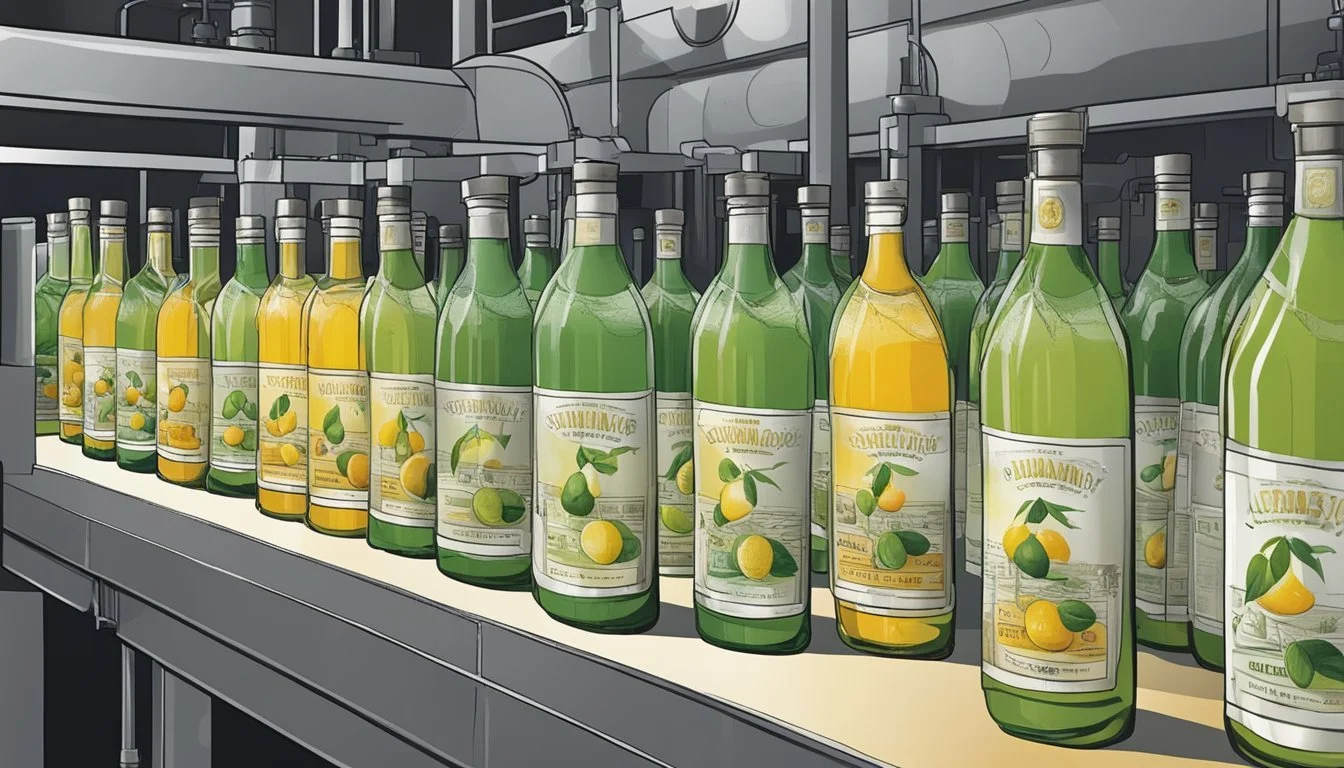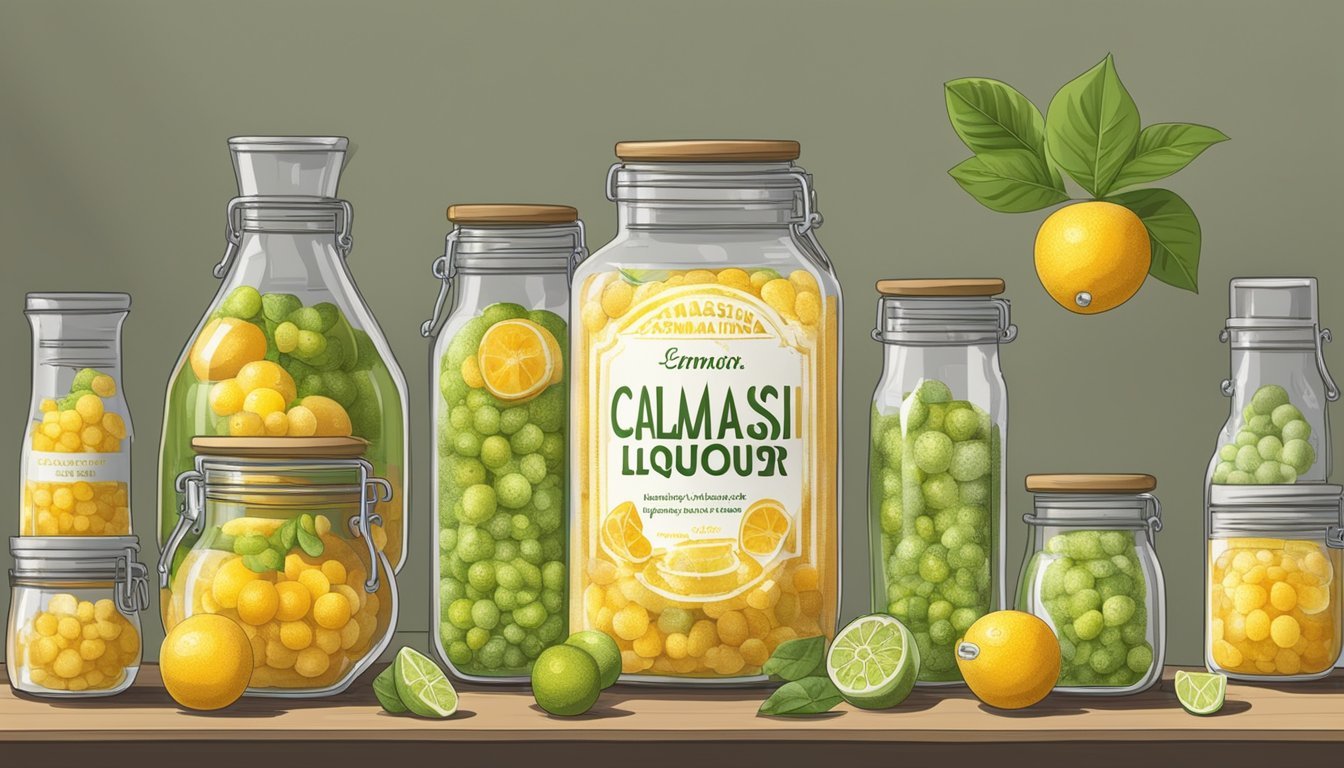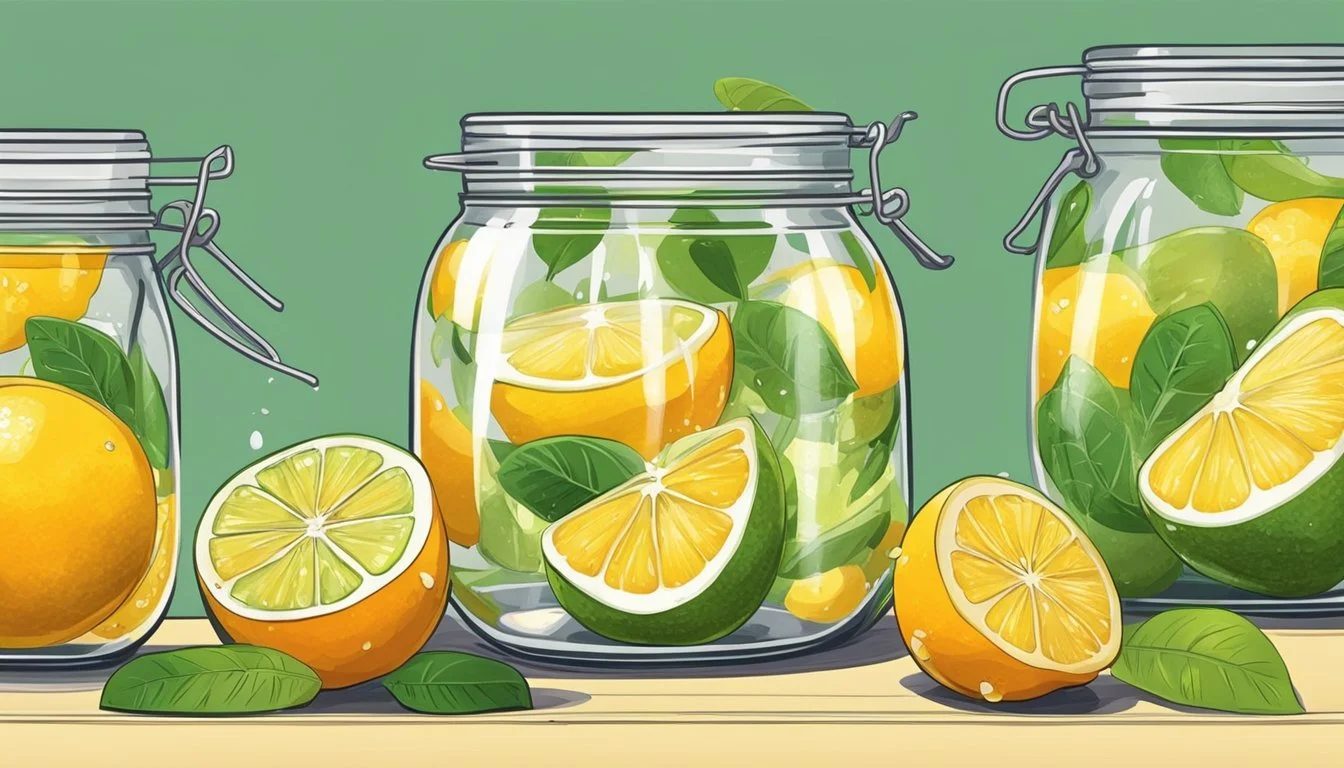How to Ferment Calamansi Liquor
Mastering the Art of Citrus Fermentation
Calamansi, a small citrus fruit widely used in Southeast Asian cuisine, offers a unique tart flavor that's ideal for fermentation. When fermented, these fruits (What wine goes well with fruits?) can be transformed into a Calamansi liquor, a distinctive beverage that carries both the complexity of the fermentation process and the refreshing zestiness of citrus. Fermentation, an age-old technique, lends itself particularly well to acidic fruits like calamansi, creating a harmonious balance between sweetness and sourness in the final liquor.
The process of crafting this fermented citrus drink involves the careful preparation of the fruit juice, the introduction of select sugars for the fermentation agent to consume, and a controlled environment to allow the transformation to occur. By harnessing the natural tendency of yeast to convert sugars into alcohol, enthusiasts and artisan producers can infuse local character into every bottle of Calamansi liquor. Each stage of the process is crucial to ensure that the final product is both pleasing to the palate and has the desired alcoholic strength, embodying the essence of the fruit in a more potent and invigorating form.
The versatility of Calamansi allows it to serve as an excellent base for a variety of fermented beverages, making it a popular choice among beverage aficionados. The resulting liquor is not only a testament to the appeal of citrus fruits in fermented drinks but also to the alchemy that is the fermentation process, turning simple ingredients into complex, enjoyable beverages.
Understanding Calamansi and Citrus Fermentation
In exploring how to ferment calamansi liquor, it's essential to consider the biochemistry of fermentation, the health rewards of citrus-based fermented drinks, and the drink's cultural roots in Southeast Asia.
The Science of Fermentation
Fermentation is a metabolic process performed by microorganisms such as yeast and bacteria, where sugars are converted into either alcohol, gases, or organic acids. In the context of creating calamansi liquor, the calamansi juice—rich in natural sugars—serves as the food source for these microbes. With the right balance in temperature and acidity, these microorganisms thrive and facilitate a transformation. The primary outcome of fermentation in this setting is ethyl alcohol, ramping up the alcohol content and altering the beverage's character.
Optimal Fermentation Conditions:
Temperature: 65-70°F (18-21°C)
pH (Acidity): Maintained by calamansi's natural acidity
Microbes: Yeasts with low aldehyde and sulfite production
Health Benefits of Fermented Citrus Drinks
Fermented calamansi beverages are not just valued for their zesty taste but also for their health benefits. Vitamin C and antioxidants are abundant in calamansi fruit, contributing to a fortified immune system and combating oxidative stress. The fermentation process can potentially enhance bioavailability, making these nutrients more accessible for absorption. However, it's crucial to enjoy these drinks in moderation due to their alcohol and sugar content.
Notable Nutrients:
Vitamin C: Essential for immune function and skin health
Antioxidants: Scavenge harmful free radicals
Cultural Significance in Southeast Asia
Calamansi, also known as calamansi lime or Philippine lime, plays a significant role in Filipino and Malaysian recipes. The fruit resembles a small, spherical kumquat and boasts a unique flavor profile, which is indispensable in numerous Southeast Asian cuisines. The tradition of fermenting calamansi underscores the region's rich cultural heritage, where fermentation is deeply woven into their culinary arts, preserving both the food and the age-old practices.
Preparing the Calamansi for Fermentation
Before embarking on the fermentation process, one must prioritize selecting premium fruit, extracting the juice properly, and maintaining a sanitary environment to prevent unwanted bacteria from spoiling the batch.
Selecting and Handling Fresh Calamansi
When choosing calamansi for fermentation, one should look for fruits that are firm, free of blemishes, and exhibit a vibrant color indicative of freshness. The skin of the calamansi should be intact without any punctures to prevent the introduction of harmful bacteria.
Appearance: Look for bright, evenly colored skins.
Texture: Select fruits that are firm to the touch.
Freshness: Avoid any calamansi with soft spots or signs of decay.
Handling the calamansi with clean hands and utensils is crucial to prevent contamination and ensure the safety of the fermented drink.
Creating the Base Calamansi Juice
Creating a flavourful base is essential for quality fermented calamansi liquor. One should begin by washing the calamansi thoroughly under running water, drying them afterwards to remove any lingering dirt or impurities. The aim is to extract the maximum amount of juice while discarding the seeds, as they can impart a bitter taste.
Wash: Rinse the calamansi under cold, running water.
Dry: Pat dry with a clean cloth or paper towel.
Juice: Cut the calamansi in half and squeeze to extract the juice, straining to remove seeds and excess pulp.
Measure: Collect 1 1/2 cups of calamansi juice for the recipe.
After juicing, sugar is typically added to the calamansi juice. The sugar acts as a food source for the bacteria that will drive the fermentation process.
Sugar: Incorporate a precise ratio to the juice – often, recipes call for about a cup of sugar to 800ml of water, but this can vary based on personal taste preferences.
Sanitation and Safety
Cleanliness is paramount in fermentation to ensure only the desired bacteria are present in the process. All equipment that will come into contact with the ingredients should be sterilized beforehand to eliminate any harmful microbes.
Containers: Use glass or food-grade plastic that has been thoroughly cleaned and sanitized.
Utensils: Ensure all spoons, measuring cups, and juicers are disinfected.
Once the calamansi juice and sugar base are ready, they must be transferred to the sanitized container for the fermentation to begin. Proper sanitation avoids the growth of unwanted microorganisms that could spoil the calamansi liquor.
The Fermentation Process
The fermentation process for creating Calamansi liquor involves careful preparation of ingredients, maintaining a clean environment, and being patient as natural fermentation takes place. This guide will walk you through each step to ensure your citrus drink develops the desired taste and aroma.
Ingredients and Equipment
Ingredients:
Calamansi juice: 1 1/2 cups
Sugar: 1 cup (simple syrup or honey as alternatives)
Water: 800ml, preferably filtered
Yeast: wine yeast or a natural starter like ginger bug
Equipment:
Fermentation vessel: glass jar or food-grade plastic container
Airlock or cheesecloth and rubber band
Measuring utensils
Mixing spoon
Fine mesh strainer
Bottles for storage
Mixing and Primary Fermentation
Combine the calamansi juice, sugar, and water in your fermentation vessel. Stir the mixture until the sugar completely dissolves. Add your chosen yeast or starter, such as a small amount of ginger bug, to introduce the necessary microbes for fermentation.
Cover the container with an airlock or cheesecloth secured with a rubber band. This allows carbon dioxide to escape while keeping contaminants out. Store the vessel in a cool, dark place with a consistent temperature between 65-70 degrees Fahrenheit. The primary fermentation phase usually lasts about one week, though it can be shorter or longer depending on environmental factors and the potency of your yeast or starter.
Secondary Fermentation and Flavoring
After primary fermentation, strain the mixture to remove any pulp or sediment. For secondary fermentation, transfer the liquid to a clean container, leaving some headspace to allow for expansion. If extra flavor is desired, this is the stage to add complementary flavors like lemon, lime, or ginger.
Re-secure the cheesecloth or airlock and allow the calamansi liquor to ferment further. This could take additional weeks or months depending on the desired strength and flavor complexity. During this time, natural carbonation can develop, enhancing the texture of the liquor. The longer it ferments, the more nuanced the taste will become. Once the desired flavor profile is reached, transfer the finished liquor into bottles, seal them and store in a cool, dark place.
Finishing and Bottling
After the initial fermentation process, the next crucial steps are monitoring the brew's maturation and the bottling procedure, which will ensure the Calamansi liquor achieves the desired taste profile and clarity.
Monitoring Fermentation and Maturation
Successful fermentation relies on careful observation. One must monitor:
Acidity: Essential for taste balance and microbial stability.
Alcohol Content: Indicates the completion of fermentation when it stabilizes.
Fermentation Activity: Observing the cessation of bubble formation, which may be reminiscent of soda water effervescence, implies fermentation is nearing its end.
The brewer should taste the Calamansi liquor periodically to ensure it is developing the desired characteristics. Once the bubbling activity decreases significantly, this typically suggests that the sugars have been consumed and alcohol production is stable.
Clarifying and Bottling
Once the fermentation has subsided:
Clarification:
Transfer the liquor into a clean vessel, leaving sediment behind.
Use cheesecloth to filter out any remaining particles, if necessary.
Preparation for Bottling:
Ensure bottles are sanitized to prevent any contamination.
If creating a Calamansi hard lemonade or cocktail, consider the desired carbonation level which can be adjusted by adding a measured amount of sugar before bottling to induce secondary fermentation.
Bottling:
Fill each bottle, leaving an appropriate headspace.
Seal with a tight-fitting cap.
After bottling, store the liquor in a cool, dark place for maturation. The duration of this period can vary depending on desired taste and alcohol content, much like the aging process of spirits or kombucha. The final product should offer a harmonious blend of Calamansi's unique citrus notes with the complexity that fermentation imparts.
Serving and Enjoying Calamansi Liquor
When serving calamansi liquor, it's important to consider both the method and the accompaniments that highlight its unique flavor profile. This section breaks down how one can present and pair this versatile citrus liquor to enhance any drinking experience.
Suggested Serving Methods
Neat: Serve calamansi liquor at room temperature or slightly chilled to appreciate its pure flavor. A standard serving is typically 1.5 ounces.
On the Rocks: Pour over ice to mellow the flavors slightly. Large ice cubes are preferred as they melt slower and dilute the drink less.
Cocktail and Beverage Pairings
Calamansi Margarita: Combine with tequila, a touch of simple syrup, and a salt rim for a tropical twist on the classic margarita.
Vodka Calamansi: Mix with vodka and a splash of simple syrup to let the calamansi shine through; serve over ice.
Calamansi-Whiskey Sour: Blend whiskey with calamansi juice and simple syrup, then serve over ice with a cherry garnish.
Calamansi Spritz: For a lighter drink, add to sparkling wine and serve chilled. This reduces the calories per serving while retaining flavor.
Ginger Calamansi Cooler: Mix with ginger beer for a spicy-citrusy beverage; perfect when served cold and garnished with a slice of lime.
Understanding the Nutritional Profile
When fermenting calamansi liquor, it is important to acknowledge the nutritional components that go into the beverage. These components can impact both the flavor and potential health benefits of the finished drink.
Caloric and Nutrient Content
Calamansi is a variety of citrus known for its nutritional benefits and distinctive tart flavor, often compared to a blend between lime and mandarin oranges. The value of calamansi can be assessed in terms of the calories it provides as well as its protein, fat, carbohydrates, and sodium content.
In its raw form, calamansi is low in calories and contains moderate amounts of carbohydrates. It is virtually fat-free and contains some protein. Here is a brief overview of its nutrient content per 100 grams:
Calories: Approximately 30
Protein: 0.76 grams
Fat: 0.19 grams
Carbohydrates: 10.14 grams
Sodium: Trace amounts
During the fermentation of calamansi liquor, sugars are introduced and converted by yeast into alcohol, which can alter the nutritional profile. It should be noted that while the carbohydrates from the base fruit can contribute to the sugar content required for fermentation, additional sugars—either natural or processed—may be added to achieve the desired level of fermentation. The final caloric content in fermented beverages also depends on the alcohol content produced, which can make the drink higher in calories compared to its raw fruit counterpart.
The health benefits of calamansi are retained in the fermented liquor to some extent. The fermentation process can introduce beneficial bacteria and yeast, potentially offering probiotic effects. Moreover, calamansi has been known for its antioxidants properties, mainly owing to its vitamin C content. These attributes may contribute to overall wellness, assisting in immune support and the synthesis of collagen.
However, it is crucial to consume fermented calamansi liquor in moderation due to its alcohol content. Alcohol can have various effects on health, and individual reactions can vary based on the amount consumed.
Creative Culinary Applications
When one introduces Calamansi Liquor into the kitchen, they unlock a variety of unique flavors and combinations, enhancing both sweet and savory dishes. This citrus-infused spirit adds a twist to traditional recipes and can be paired strategically with foods to elevate the dining experience.
Cooking With Calamansi Liquor
Calamansi Liquor introduces a vibrant flavor to many recipes. Chefs may incorporate it into a glaze for meats, lending a sweet citrus note that complements the savoriness of poultry or pork. For example, one might mix Calamansi Liquor with soy sauce and honey, creating a marinade that gives a delightful zing to chicken wings.
Incorporating this fermented citrus drink into sauces can also yield exquisite results. A chef might whisk Calamansi Liquor with olive oil, garlic, and herbs to dress a fresh green salad or drizzle over a dish of roasted vegetables. Its unique taste is adaptable, allowing it to sit alongside strong-flavored foods such as kimchi or sauerkraut without being overshadowed.
Another inventive use of Calamansi Liquor is in the realm of desserts. Its tartness can cut through the richness of a cream-based dessert, providing a refreshing balance. A splash could be added, for instance, to mascarpone cheese when preparing a citrus-infused tiramisu.
Moreover, calamondin, which is similar to calamansi, could be used to create a liquor with a sweeter profile. This variation could find its way into fruit-based sauces or syrups, creating compotes that would pair brilliantly with a cheese platter, blending the worlds of sweet, sour, and savory altogether.
This fermented citrus drink does not limit itself to the background; it can stand front and center as a key ingredient, delivering distinct sour notes that enhance a myriad of culinary creations.
Fermentation Variations and Experiments
In the pursuit of crafting Calamansi liquor, one may embark on various fermentation experiments, each exploring different ingredients and techniques to influence flavor profiles and beverage characteristics.
Alternative Ingredients and Techniques
When fermenting Calamansi to create a citrus liquor, traditional white sugar serves as a common fermentation agent, but alternatives like sugar cane or honey can introduce distinct nuances in sweetness and taste. One can opt for honey for its natural, floral tones or sugar cane for a more rich, molasses-like sweetness. Both alternatives can complement the tangy, tropical essence of Calamansi.
Kefir grains, typically used in the production of milk kefir and water kefir, present another avenue for fermentation variation. They are a symbiotic culture of bacteria and yeast that can be employed to provide a probiotic quality to the beverage. While milk kefir grains are commonly used in dairy, water kefir grains serve as an excellent option for fermenting sugar-water solutions with Calamansi juice.
A different fermentation program can be observed with kombucha culture, where the SCOBY (Symbiotic Culture Of Bacteria and Yeast) aids in the fermentation process. This method imparts a unique, vinegary bite to the liquor, distinguishing it from drinks fermented with kefir grains or traditional yeast.
Expanding the flavor profile further, additional ingredients such as ginger or banana may be incorporated. Ginger adds a spicy kick, enhancing the liquor's warmth, while banana contributes a smooth, sweet backdrop that can soften the sharp citrus notes.
Each variation requires careful observation and control of the fermentation environment, including factors like temperature, pH levels, and time, to ensure a successful fermentation and to achieve the desired outcome of the Calamansi liquor.






